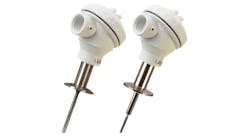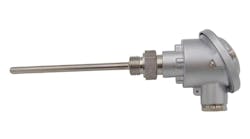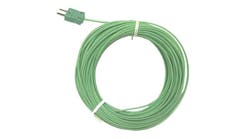How distributed temperature sensing can be used for gas leak detection
Not only are gas leaks costly, they’re also potentially dangerous. Thus, an accurate and reliable gas leak-detection system is essential for any operation handling gases. There are many methods of leak detection, but different situations can call for different technologies. One of those methods is distributed temperature sensing (DTS) leak detection.
To help its members learn about DTS leak detection, the International Society of Automation (ISA) Will-DuPage Chapter hosted Yokogawa’s Steve Webster at its latest technical meeting on Sept. 17 at Holiday Inn & Suites – Joliet Southwest in Joliet, Illinois, a new location.
Webster’s presentation provided attendees with an introduction to DTS technology, explaining how it works, connections and software solutions, as well as fiber optic cable basics and potential leak-detection applications.
The theory behind DTS technology goes back to the early 1900s, with the concept of light scattering notably studied by Sir Chandraskhara Venkata Raman. The technology gained momentum in the 1980s, Webster explained.
Using this premise, DTS measures temperature and strain in an optical fiber resulting from the interaction between a laser light and the optical fiber, Webster said. As the laser light signal travels through the fiber optic cable, the back-scattered light will be intensified in areas along the cable where there are temperature or strain changes.
“When you have an event, you have light coming back quicker than it should,” Webster said.
By putting fiber optic cable around an entire vessel or process area, an accurate measurement of the whole system can be acquired.
“One of the many advantages is, it’s easy to install after equipment is already in the field,” Webster said. “You can manipulate it around the factory and manipulate it around pipelines in the field.”
Temperature data can be acquired for predetermined points along the fiber optic cable, from 10 cm to 2 meters apart. Using those predetermined locations, the exact spot of the anomaly along the fiber optic cable can be found, Webster explained.
“DTS technology offers a safe and non-intrusive measurement that has the capability to pinpoint the precise location of any warm or cold spot instantly,” Webster said.
Yokogawa recommends multimode fiber optic cable as long as 20 to 60 km. Cable coating can vary depending on application. Additionally, Yokogawa’s DTS solution allows for connection to a DCS or PLC for full control, or integration with data acquisition systems, third-party software systems and Modbus, among others.
DTS technology can be used on many applications, including those in hazardous areas. Other applications include reactors, furnaces, boilers, conveyors and much more.
“You can do it on pretty much anything, as long as you can run the fiber optic cable,” Webster said.
ISA Will-DuPage’s next technical meeting will take place Oct. 15 at Mistwood Golf Course in Romeoville, Illinois. Brian Haug of Continental Electric will present on the topic of leveraging solar energy production at process facilities.




